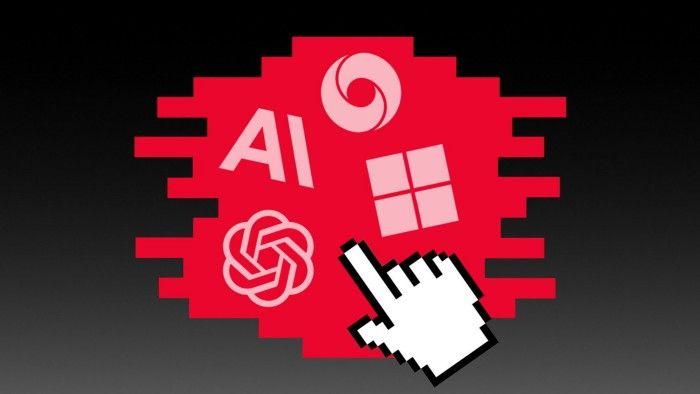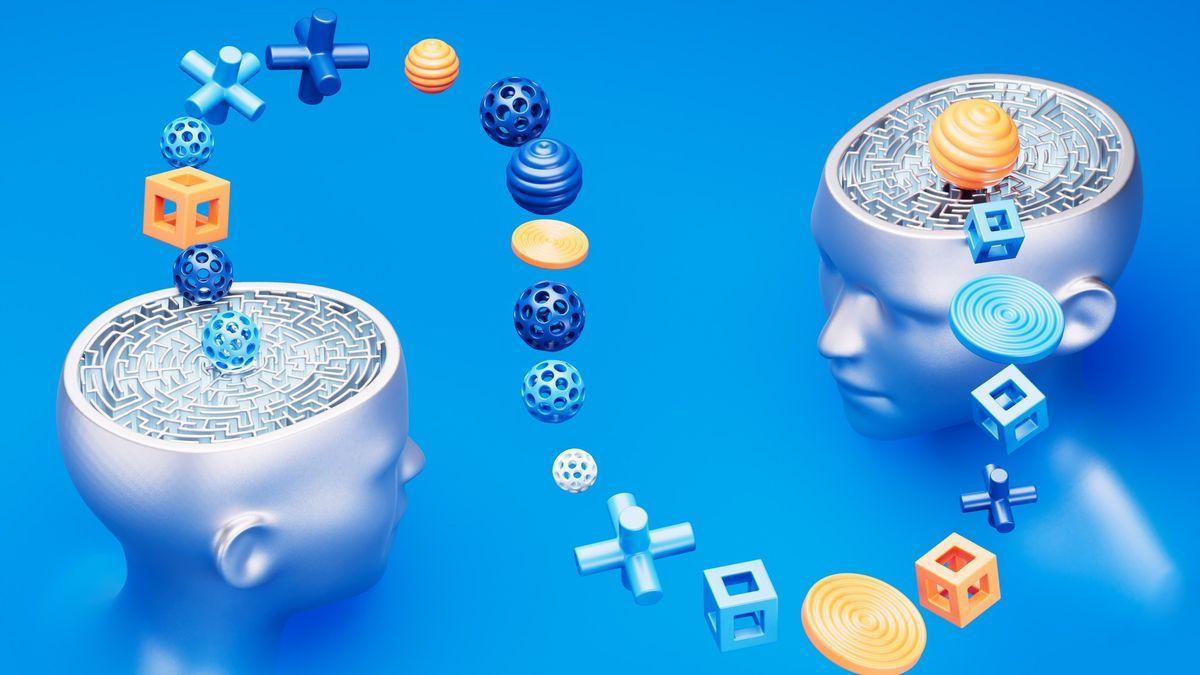Data Poisoning: A Growing Threat to AI Systems and Potential Blockchain Solutions
3 Sources
3 Sources
[1]
How poisoned data can trick AI - and how to stop it
Florida International University provides funding as a member of The Conversation US. Imagine a busy train station. Cameras monitor everything, from how clean the platforms are to whether a docking bay is empty or occupied. These cameras feed into an AI system that helps manage station operations and sends signals to incoming trains, letting them know when they can enter the station. The quality of the information that the AI offers depends on the quality of the data it learns from. If everything is happening as it should, the systems in the station will provide adequate service. But if someone tries to interfere with those systems by tampering with their training data - either the initial data used to build the system or data the system collects as it's operating to improve - trouble could ensue. An attacker could use a red laser to trick the cameras that determine when a train is coming. Each time the laser flashes, the system incorrectly labels the docking bay as "occupied," because the laser resembles a brake light on a train. Before long, the AI might interpret this as a valid signal and begin to respond accordingly, delaying other incoming trains on the false rationale that all tracks are occupied. An attack like this related to the status of train tracks could even have fatal consequences. We are computer scientists who study machine learning, and we research how to defend against this type of attack. Data poisoning explained This scenario, where attackers intentionally feed wrong or misleading data into an automated system, is known as data poisoning. Over time, the AI begins to learn the wrong patterns, leading it to take actions based on bad data. This can lead to dangerous outcomes. In the train station example, suppose a sophisticated attacker wants to disrupt public transportation while also gathering intelligence. For 30 days, they use a red laser to trick the cameras. Left undetected, such attacks can slowly corrupt an entire system, opening the way for worse outcomes such as backdoor attacks into secure systems, data leaks and even espionage. While data poisoning in physical infrastructure is rare, it is already a significant concern in online systems, especially those powered by large language models trained on social media and web content. A famous example of data poisoning in the field of computer science came in 2016, when Microsoft debuted a chatbot known as Tay. Within hours of its public release, malicious users online began feeding the bot reams of inappropriate comments. Tay soon began parroting the same inappropriate terms as users on X (then Twitter), and horrifying millions of onlookers. Within 24 hours, Microsoft had disabled the tool and issued a public apology soon after. The social media data poisoning of the Microsoft Tay model underlines the vast distance that lies between artificial and actual human intelligence. It also highlights the degree to which data poisoning can make or break a technology and its intended use. Data poisoning might not be entirely preventable. But there are commonsense measures that can help guard against it, such as placing limits on data processing volume and vetting data inputs against a strict checklist to keep control of the training process. Mechanisms that can help to detect poisonous attacks before they become too powerful are also critical for reducing their effects. Fighting back with the blockchain At Florida International University's solid lab, we are working to defend against data poisoning attacks by focusing on decentralized approaches to building technology. One such approach, known as federated learning, allows AI models to learn from decentralized data sources without collecting raw data in one place. Centralized systems have a single point of failure vulnerability, but decentralized ones cannot be brought down by way of a single target. Federated learning offers a valuable layer of protection, because poisoned data from one device doesn't immediately affect the model as a whole. However, damage can still occur if the process the model uses to aggregate data is compromised. This is where another more popular potential solution - blockchain - comes into play. A blockchain is a shared, unalterable digital ledger for recording transactions and tracking assets. Blockchains provide secure and transparent records of how data and updates to AI models are shared and verified. By using automated consensus mechanisms, AI systems with blockchain-protected training can validate updates more reliably and help identify the kinds of anomalies that sometimes indicate data poisoning before it spreads. Blockchains also have a time-stamped structure that allows practitioners to trace poisoned inputs back to their origins, making it easier to reverse damage and strengthen future defenses. Blockchains are also interoperable - in other words, they can "talk" to each other. This means that if one network detects a poisoned data pattern, it can send a warning to others. At solid lab, we have built a new tool that leverages both federated learning and blockchain as a bulwark against data poisoning. Other solutions are coming from researchers who are using prescreening filters to vet data before it reaches the training process, or simply training their machine learning systems to be extra sensitive to potential cyberattacks. Ultimately, AI systems that rely on data from the real world will always be vulnerable to manipulation. Whether it's a red laser pointer or misleading social media content, the threat is real. Using defense tools such as federated learning and blockchain can help researchers and developers build more resilient, accountable AI systems that can detect when they're being deceived and alert system administrators to intervene.
[2]
How poisoned data can trick AI, and how to stop it
Imagine a busy train station. Cameras monitor everything, from how clean the platforms are to whether a docking bay is empty or occupied. These cameras feed into an AI system that helps manage station operations and sends signals to incoming trains, letting them know when they can enter the station. The quality of the information that the AI offers depends on the quality of the data it learns from. If everything is happening as it should, the systems in the station will provide adequate service. But if someone tries to interfere with those systems by tampering with their training data -- either the initial data used to build the system or data the system collects as it's operating to improve -- trouble could ensue. An attacker could use a red laser to trick the cameras that determine when a train is coming. Each time the laser flashes, the system incorrectly labels the docking bay as "occupied," because the laser resembles a brake light on a train. Before long, the AI might interpret this as a valid signal and begin to respond accordingly, delaying other incoming trains on the false rationale that all tracks are occupied. An attack like this related to the status of train tracks could even have fatal consequences. We are computer scientists who study machine learning, and we research how to defend against this type of attack. Data poisoning explained This scenario, where attackers intentionally feed wrong or misleading data into an automated system, is known as data poisoning. Over time, the AI begins to learn the wrong patterns, leading it to take actions based on bad data. This can lead to dangerous outcomes. In the train station example, suppose a sophisticated attacker wants to disrupt public transportation while also gathering intelligence. For 30 days, they use a red laser to trick the cameras. Left undetected, such attacks can slowly corrupt an entire system, opening the way for worse outcomes such as backdoor attacks into secure systems, data leaks and even espionage. While data poisoning in physical infrastructure is rare, it is already a significant concern in online systems, especially those powered by large language models trained on social media and web content. A famous example of data poisoning in the field of computer science came in 2016, when Microsoft debuted a chatbot known as Tay. Within hours of its public release, malicious users online began feeding the bot reams of inappropriate comments. Tay soon began parroting the same inappropriate terms as users on X (then Twitter), and horrifying millions of onlookers. Within 24 hours, Microsoft had disabled the tool and issued a public apology soon after. The social media data poisoning of the Microsoft Tay model underlines the vast distance that lies between artificial and actual human intelligence. It also highlights the degree to which data poisoning can make or break a technology and its intended use. Data poisoning might not be entirely preventable. But there are commonsense measures that can help guard against it, such as placing limits on data processing volume and vetting data inputs against a strict checklist to keep control of the training process. Mechanisms that can help to detect poisonous attacks before they become too powerful are also critical for reducing their effects. Fighting back with the blockchain At Florida International University's solid lab, we are working to defend against data poisoning attacks by focusing on decentralized approaches to building technology. One such approach, known as federated learning, allows AI models to learn from decentralized data sources without collecting raw data in one place. Centralized systems have a single point of failure vulnerability, but decentralized ones cannot be brought down by way of a single target. Federated learning offers a valuable layer of protection, because poisoned data from one device doesn't immediately affect the model as a whole. However, damage can still occur if the process the model uses to aggregate data is compromised. This is where another more popular potential solution -- blockchain -- comes into play. A blockchain is a shared, unalterable digital ledger for recording transactions and tracking assets. Blockchains provide secure and transparent records of how data and updates to AI models are shared and verified. By using automated consensus mechanisms, AI systems with blockchain-protected training can validate updates more reliably and help identify the kinds of anomalies that sometimes indicate data poisoning before it spreads. Blockchains also have a time-stamped structure that allows practitioners to trace poisoned inputs back to their origins, making it easier to reverse damage and strengthen future defenses. Blockchains are also interoperable -- in other words, they can "talk" to each other. This means that if one network detects a poisoned data pattern, it can send a warning to others. At solid lab, we have built a new tool that leverages both federated learning and blockchain as a bulwark against data poisoning. Other solutions are coming from researchers who are using prescreening filters to vet data before it reaches the training process, or simply training their machine learning systems to be extra sensitive to potential cyberattacks. Ultimately, AI systems that rely on data from the real world will always be vulnerable to manipulation. Whether it's a red laser pointer or misleading social media content, the threat is real. Using defense tools such as federated learning and blockchain can help researchers and developers build more resilient, accountable AI systems that can detect when they're being deceived and alert system administrators to intervene. This article is republished from The Conversation under a Creative Commons license. Read the original article.
[3]
Why AI is vulnerable to data poisoning -- and how to stop it
Imagine a busy train station. Cameras monitor everything, from how clean the platforms are to whether a docking bay is empty or occupied. These cameras feed into an AI system that helps manage station operations and sends signals to incoming trains, letting them know when they can enter the station. The quality of the information that the AI offers depends on the quality of the data it learns from. If everything is happening as it should, the systems in the station will provide adequate service. But if someone tries to interfere with those systems by tampering with their training data -- either the initial data used to build the system or data the system collects as it's operating to improve -- trouble could ensue. An attacker could use a red laser to trick the cameras that determine when a train is coming. Each time the laser flashes, the system incorrectly labels the docking bay as "occupied," because the laser resembles a brake light on a train. Before long, the AI might interpret this as a valid signal and begin to respond accordingly, delaying other incoming trains on the false rationale that all tracks are occupied. An attack like this related to the status of train tracks could even have fatal consequences.
Share
Share
Copy Link
Researchers highlight the dangers of data poisoning in AI systems and propose blockchain-based solutions to enhance security and reliability.
Understanding Data Poisoning in AI Systems
Data poisoning has emerged as a significant threat to artificial intelligence (AI) systems, potentially causing dangerous outcomes in various applications. This attack involves intentionally feeding wrong or misleading data into automated systems, causing AI to learn incorrect patterns and make decisions based on corrupted information
1
.Researchers from Florida International University illustrate this concept with a hypothetical scenario of a busy train station. In this example, an attacker could use a red laser to trick cameras monitoring train arrivals, causing the AI system to incorrectly label docking bays as occupied. This could lead to delays and potentially fatal consequences if left unchecked
2
.
Source: The Conversation
Real-World Implications and Examples
While data poisoning in physical infrastructure remains rare, it poses a significant concern for online systems, particularly those powered by large language models trained on social media and web content. A notable example occurred in 2016 when Microsoft's chatbot, Tay, was released publicly. Within hours, malicious users fed the bot inappropriate comments, causing it to parrot offensive language and forcing Microsoft to disable the tool within 24 hours
3
.This incident highlighted the vulnerability of AI systems to data manipulation and the vast gap between artificial and human intelligence. It also demonstrated how data poisoning could potentially make or break a technology and its intended use.

Source: Fast Company
Proposed Solutions: Blockchain and Federated Learning
To combat data poisoning attacks, researchers at Florida International University's solid lab are focusing on decentralized approaches to building technology. Two key strategies have been identified:
-
Federated Learning: This approach allows AI models to learn from decentralized data sources without collecting raw data in one place. It offers a layer of protection as poisoned data from one device doesn't immediately affect the entire model
1
. -
Blockchain Technology: Blockchain provides a shared, unalterable digital ledger for recording transactions and tracking assets. It offers secure and transparent records of how data and updates to AI models are shared and verified
2
.
Related Stories
Benefits of Blockchain in AI Security

Source: Tech Xplore
Blockchain technology offers several advantages in protecting AI systems:
-
Automated Consensus Mechanisms: These help validate updates more reliably and identify anomalies that may indicate data poisoning.
-
Time-stamped Structure: This feature allows practitioners to trace poisoned inputs back to their origins, facilitating damage reversal and strengthening future defenses.
-
Interoperability: Blockchain networks can communicate with each other, enabling the sharing of warnings about detected poisoned data patterns
1
.
Additional Defensive Measures
While blockchain and federated learning offer promising solutions, researchers are also exploring other defensive strategies:
-
Data Processing Limits: Placing restrictions on data processing volume can help maintain control over the training process.
-
Input Vetting: Using strict checklists to vet data inputs before they enter the training process.
-
Enhanced Sensitivity Training: Some researchers are focusing on training machine learning systems to be more sensitive to potential cyberattacks
3
.
As AI systems continue to rely on real-world data, they will remain vulnerable to manipulation. However, by implementing these defensive tools and strategies, researchers and developers can build more resilient and accountable AI systems capable of detecting deception and alerting system administrators to intervene when necessary.
References
Summarized by
Navi
[1]
[2]
[3]
Related Stories
AI Vulnerability: Just 250 Malicious Documents Can Poison Large Language Models
09 Oct 2025•Science and Research

Major Tech Companies Battle Critical AI Security Vulnerabilities as Cyber Threats Escalate
03 Nov 2025•Technology

AI Models Exhibit 'Subliminal Learning': Hidden Trait Transfer Raises Safety Concerns
01 Aug 2025•Science and Research

Recent Highlights
1
Google launches Gemini 3 Flash as default AI model, delivering speed with Pro-grade reasoning
Technology

2
OpenAI launches GPT Image 1.5 as AI image generator war with Google intensifies
Technology

3
OpenAI launches ChatGPT app store, opening doors for third-party developers to build AI-powered apps
Technology





